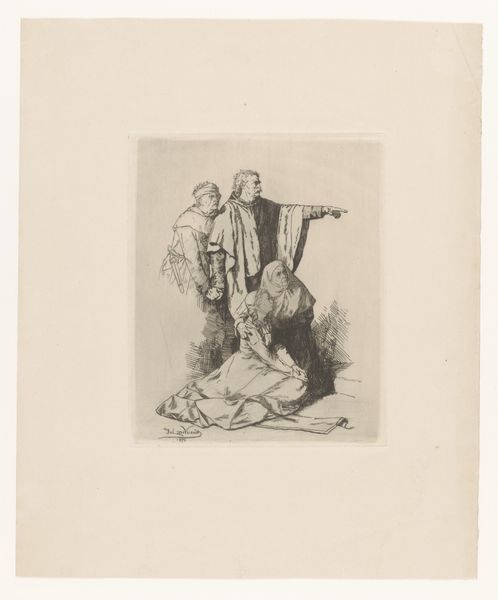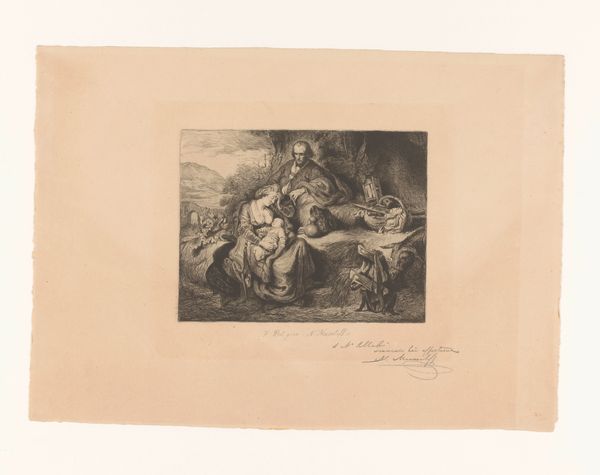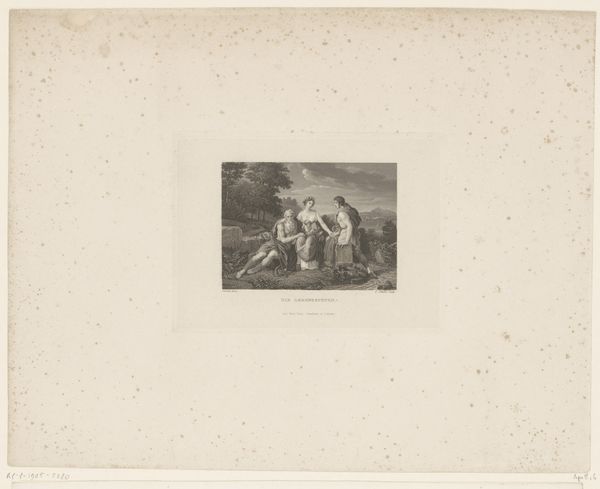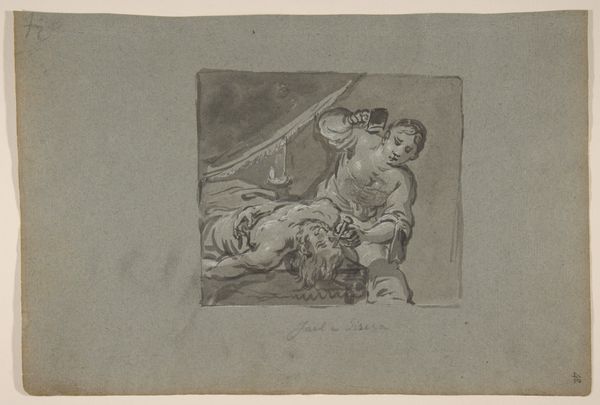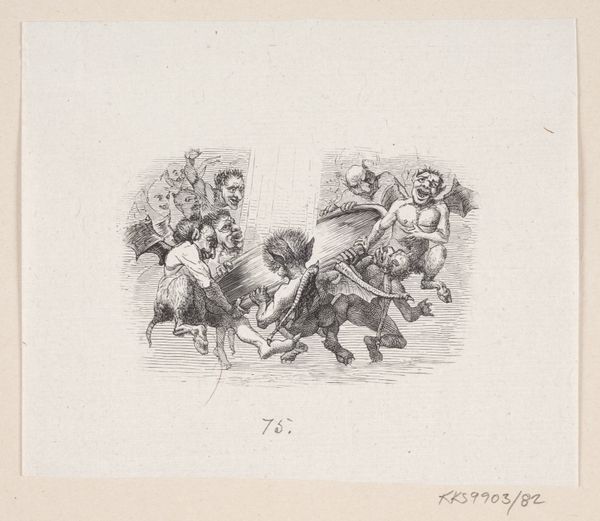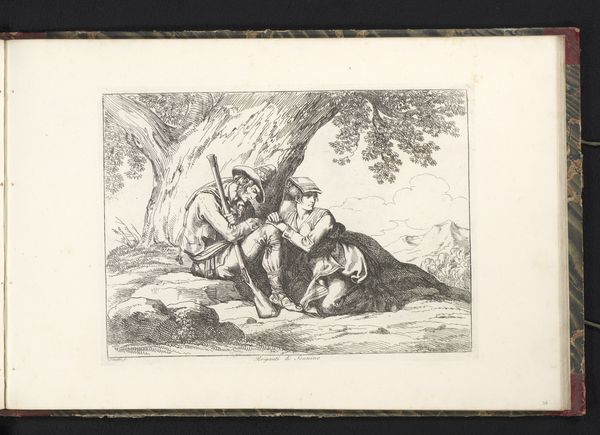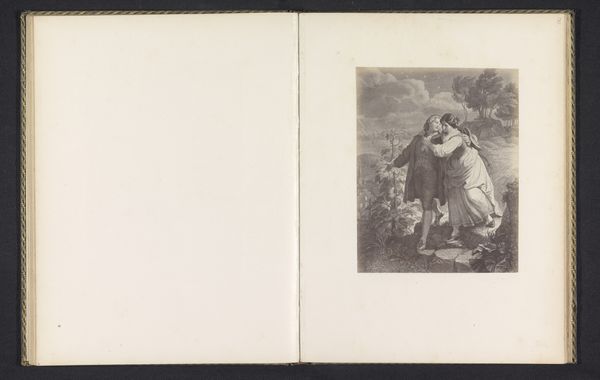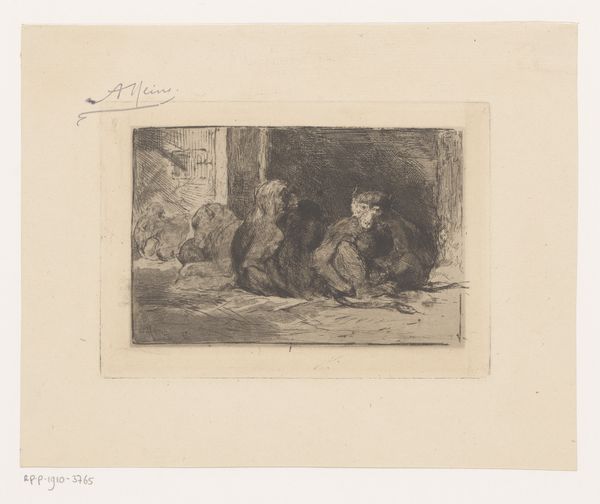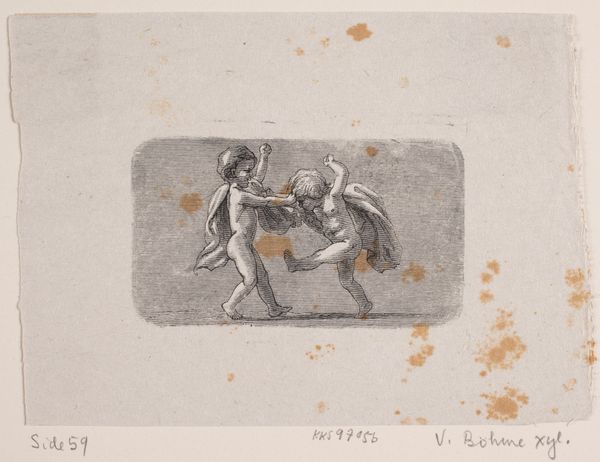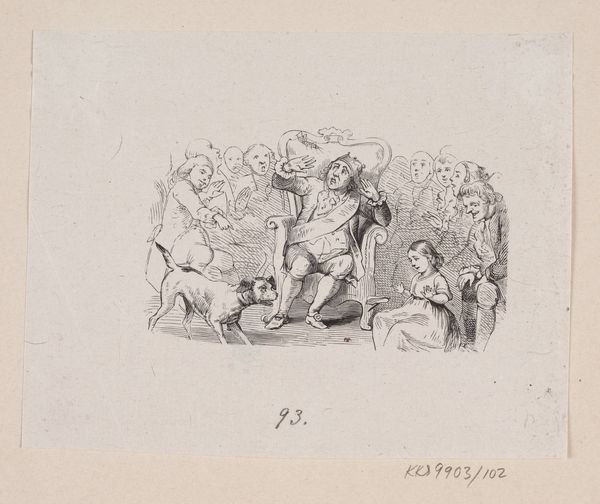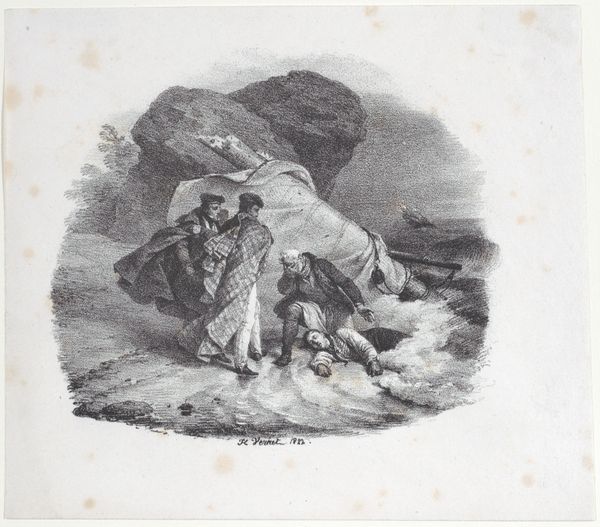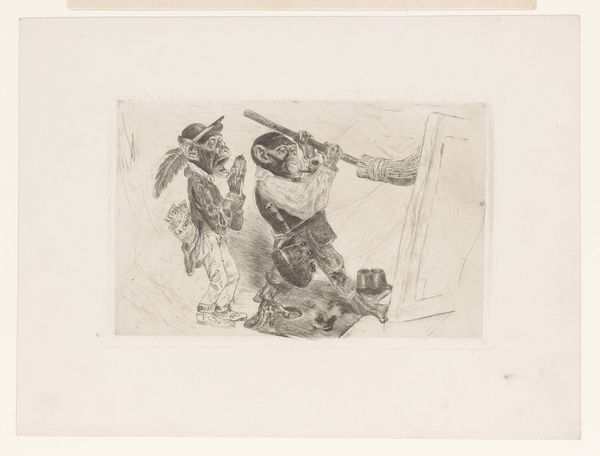
drawing, print, ink, engraving
#
pencil drawn
#
drawing
# print
#
pencil sketch
#
figuration
#
ink
#
engraving
Dimensions: 101 mm (height) x 134 mm (width) (bladmaal)
Curator: This is "Vignet til 'Ringen'" or "Vignette for 'The Ring,'" created around 1878 by Waldemar Bøhme. It's an ink engraving and pencil drawing currently held at the SMK, the National Gallery of Denmark. Editor: My first thought is: what delicate lines! It’s an incredibly intimate composition, isn’t it? These two cherubic figures, set against that cloudy background. The hatching provides remarkable volume considering the piece’s intimate scale. Curator: Indeed. Vignettes such as this served a vital function within printed material during this period. They weren't simply decorative, but added context and symbolic layers to larger works like novels and opera programs. Bøhme designed it as an interlude for Richard Wagner’s operatic Ring cycle. Editor: The poses seem quite deliberate. Is there any indication these figures align with particular characters in Wagner's mythology? The child on the left is particularly intriguing with their raised hand. Curator: Most likely! I wager, considering its position within Wagner’s broader narrative, one figure probably represents divine purity or innocence, maybe symbolizing aspects of characters like the Valkyries. This iconography speaks to a revival of mythological themes popular among artists of this period. Editor: What I admire most is the artist’s employment of negative space. Those blotches surrounding the framed scene act to isolate the central image—bringing our focus towards the subtleties in mark-making. The contrast of clean paper and delicate etching underscores the power of simple lines to define complex forms. Curator: And remember, the reception of Wagner at the time wasn't uniform. This drawing likely acted as a point of visual interpretation, guiding and perhaps even influencing how audiences perceived the opera. Visual paratexts were incredibly vital during this period of media production. Editor: Considering its original intent, this diminutive vignette presents a rich exploration of artistic practice and interpretive symbolism in the late 19th century! It's not simply ornamental. Curator: Precisely. This unassuming engraving reveals complex relationships between visual arts, musical theater, and audience reception during a transformative period in European culture.
Comments
No comments
Be the first to comment and join the conversation on the ultimate creative platform.
